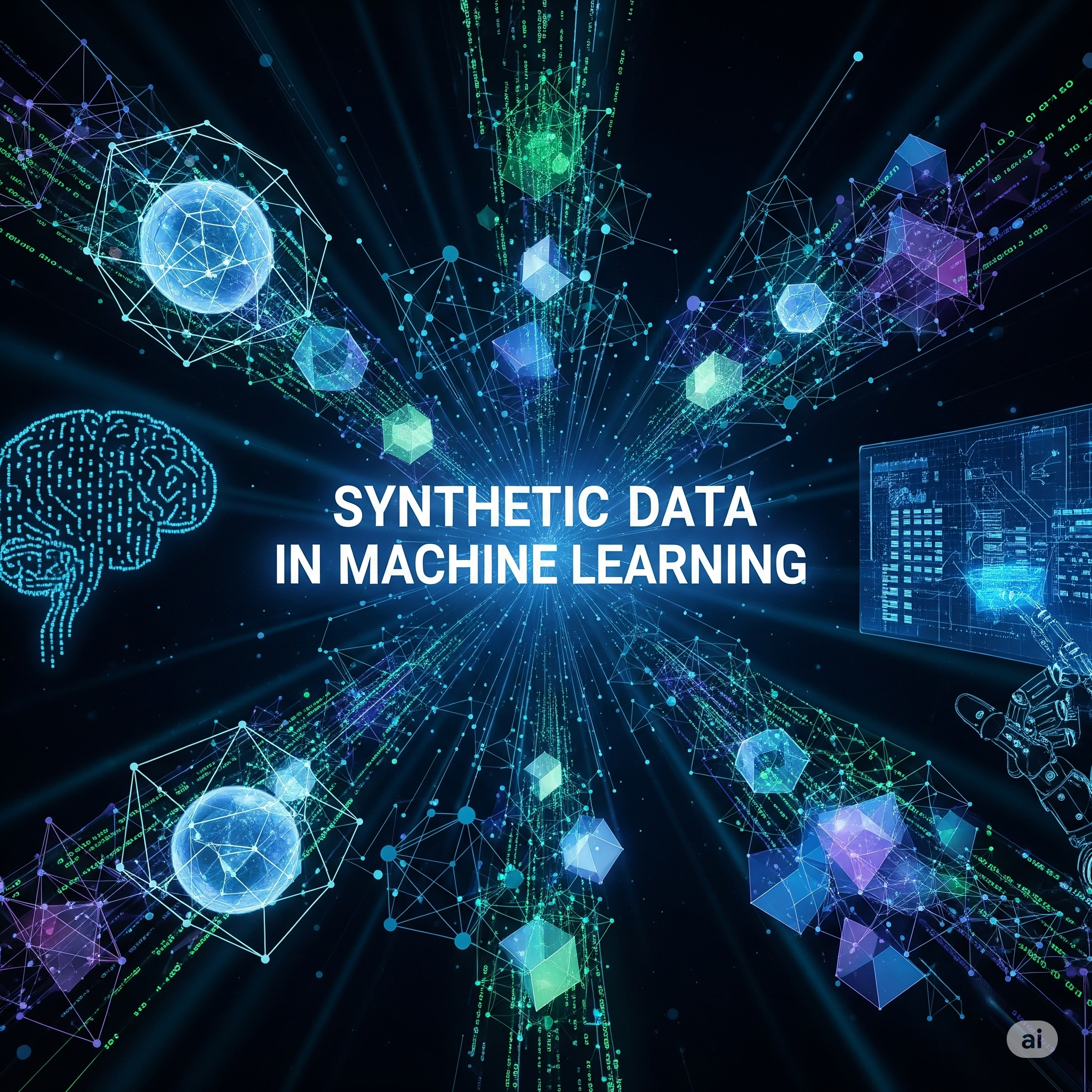Data is the fuel for artificial intelligence (AI) and machine learning (ML), but collecting enough of it especially high-quality, diverse, and privacy-compliant data can be expensive and slow. Synthetic data offers a powerful alternative, generating artificial datasets that mirror real-world patterns without exposing sensitive information.
In this blog, we’ll look at how synthetic data is changing AI development. From protecting privacy and reducing costs to creating balanced datasets and enabling safe testing, you’ll discover its key benefits, challenges, and real-world applications.

Table of Contents
In this blog, we’ll explore the benefits, risks, and key use cases of synthetic data in machine learning, and why it’s becoming a game-changer for AI development.
What is Synthetic Data?
It is artificially created information that mimics the patterns, relationships, and structure of real-world data without containing actual sensitive details. It can be generated using:
- Rule-based algorithms
- Generative AI models such as GANs (Generative Adversarial Networks) and Diffusion Models
- Simulation-based approaches for specific domains like autonomous driving or robotics
Because it is not collected from real people, it can be shared and used more freely while still retaining the characteristics needed for ML model training.
Benefits of Synthetic Data in Machine Learning
1. Data Privacy and Compliance
It removes personal identifiers, making it easier to comply with regulations like GDPR, CCPA, and HIPAA while still enabling model training.
2. Cost-Effective Data Generation
Creating real-world datasets often involves expensive collection processes. Synthetic data allows teams to generate millions of samples at a fraction of the cost.
3. Balanced and Diverse Datasets
Real-world datasets often suffer from class imbalance or missing edge cases. With synthetic data, developers can create balanced datasets, improving model accuracy and fairness.
4. Speeding Up AI Development
Synthetic datasets can be generated on-demand, reducing dependency on slow data-gathering processes and accelerating machine learning workflows.
5. Safe Testing Environments
For high-risk applications like self-driving cars or medical diagnostics, synthetic data enables safe testing without risking human lives.
Risks and Challenges of Synthetic Data
While synthetic data offers major advantages, it’s not a silver bullet. Some of the key challenges include:
1. Fidelity to Real-World Scenarios
If synthetic data fails to accurately represent real-world complexities, the resulting ML models may underperform in production.
2. Bias in Data Generation
It can still carry over biases from the original datasets or from flawed generation methods, leading to skewed AI predictions.
3. Overfitting to Synthetic Patterns
If overused, models may learn synthetic patterns that don’t generalize to real-world data, reducing accuracy in real-life situations.
Use Cases of Synthetic Data in Machine Learning
1. Autonomous Vehicles
Companies like Tesla and Waymo use simulated driving environments to train AI systems to handle rare, dangerous, or unpredictable scenarios.
2. Healthcare AI
Synthetic medical records allow researchers to train models without exposing real patient data, enhancing both innovation and privacy.
3. Fraud Detection
Synthetic financial transaction data helps train models to detect fraudulent activity without exposing real customer information.
4. NLP and Chatbots
Synthetic conversations can be generated to improve the performance of large language models, especially for low-resource languages.
5. Manufacturing and Robotics
Simulated environments help robots learn complex tasks, reducing downtime and costs in industrial settings.
The Future of Synthetic Data
As generative AI models improve, it will become even more realistic and valuable. Gartner predicts that by 2030, synthetic data will surpass real data as the primary source for AI model training in many industries.
However, the key will be combining synthetic data with real-world datasets for maximum performance, ensuring models are both accurate and robust.
Conclusion
Synthetic data is becoming a game-changer for AI, making it possible to innovate faster, train models more effectively, and avoid many of the pitfalls of real-world data collection. As generative AI improves, these datasets will become even more realistic and valuable.
In this blog, we explored how synthetic data helps AI projects overcome data scarcity, privacy concerns, and testing limitations. The future will belong to teams that combine synthetic and real data for models that are accurate, ethical, and production-ready.
Related Reads
Simplifying the Mathematics of Neural Networks and Deep Learning
LLM Engineer Toolkit – Your Complete Map to 120+ LLM Libraries
Prompt Engineering vs. Fine-Tuning: Choosing the Right Strategy for Optimizing LLMs in 2025
MLOps in 2025: Best Practices for Deploying and Scaling Machine Learning Models
GPT-5: The Unstoppable Next-Gen Revolution Redefining Artificial Intelligence
External Resources
Gartner Report on Synthetic Data Trends
https://www.gartner.com/en/newsroom/press-releases


5 thoughts on “Synthetic Data in Machine Learning: Proven Benefits, Risks and Use Cases”